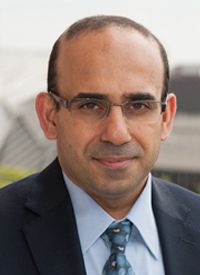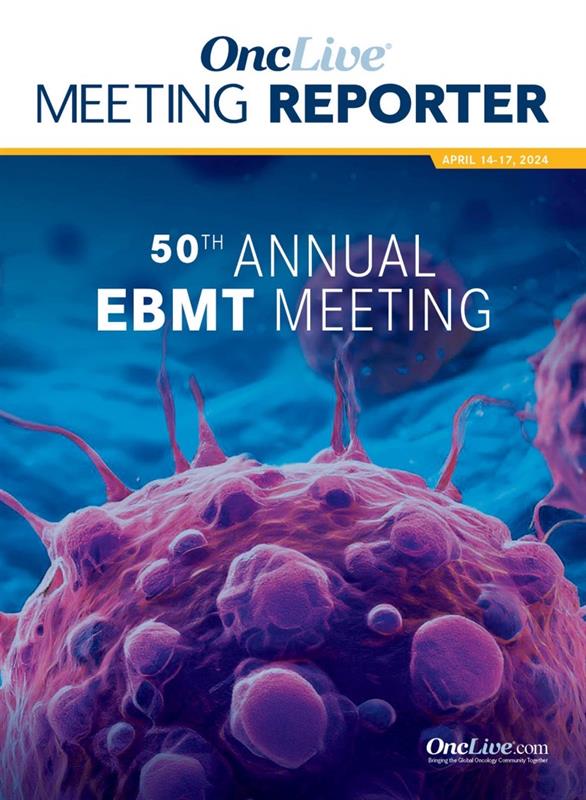Commentary
Article
Ongoing Research Aims to Expand Treatment Options, Address Unmet Needs in GVHD
Author(s):
Mohamad Mohty, MD, PhD, discusses unmet needs for patients with chronic or acute GVHD, for whom standard-of-care therapies often fall short.
Mohamad Mohty, MD, PhD

In an interview with OncLive®, Mohamad Mohty, MD, PhD, discussed advancements in the management of graft-vs-host disease (GVHD) and highlighted unmet needs for patients with chronic (cGVHD) or acute GVHD (aGVHD), for whom standard-of-care therapies often fall short.
Mohty also expanded on ongoing research in GVHD reported at the 50th Annual EBMT Meeting. This included 3-year follow-up findings from the phase 2 ROCKstar trial (NCT03640481), which investigated belumosudil (Rezurock) in patients with cGVHD. The study showed that treatment with this agent yielded sustained responses, and no new safety signals were observed in eligible patients.1
Although challenges remain, advancements showcased at the EBMT meeting continue to underscore a new era for the treatment of patients with GVHD, Mohty noted. He provided further insights and key takeaways from the EBMT Annual Meeting in another interview with OncLive.
Mohty is a professor of hematology and the head of the Hematology and Cellular Therapy Department at Saint-Antoine Hospital and Sorbonne University in Paris, France. He is also head of the translational research team at the Saint-Antoine Research Center and the chairman of the Acute Leukemia Working Party of the EBMT.
OncLive: What data were seen in the aGVHD, steroid-refractory, and ruxolitinib-factory realm?
Mohty: GVHD remains a matter of concern after transplant. We’ve seen some major improvements over the past few years with the advent of posttransplant high-dose cyclophosphamide in particular. However, some patients are still [experiencing] aGVHD. Unfortunately, our first-line therapy remains focused on high-dose corticosteroids with deleterious adverse effects [AEs]; we also know that approximately 50% to 60% of patients are not going to respond to corticosteroids or are going to become corticosteroid dependent, which is not a good scenario.
We’ve been lucky over the past 3 to 4 years to have the approval of the JAK2 inhibitor ruxolitinib, which proved to be a very good drug for patients who have steroid-refractory aGVHD. We are also struggling with a smaller group of patients who are becoming ruxolitinib refractory, resistant, or dependent. If you use ruxolitinib for salvage [therapy] after corticosteroids, a small group of patients may not be able to receive ruxolitinib, not everybody will respond, and some patients will lose their initial response to ruxolitinib. We then end up with a new group of patients who are ruxolitinib refractory. This is a new category of patients. We’re fortunate that we’re now seeing research in this subgroup of patients. During the EBMT meeting, I was very excited to see some novel data on modulation of the microbiota in these patients with advanced and refractory aGVHD.
Are there any follow-up data you’d like to expand on regarding the MaaT013 product?
An important piece of information regarding the use of MaaT013 as salvage treatment based on the early-access program is its excellent safety profile. We didn’t see severe AEs in the 140 patients who were treated. It is a single-shot treatment, which is important, instead of a treatment that is received and given to the patient on a chronic basis every day for several weeks or months.
Most importantly, the responses are very quick—within 1 week. Patients who are responding are [doing so] in an excellent manner and very rapidly. Now based on this early-access program, we have very important follow-up that gives us some confidence in these results, which I consider quite reliable.
Turning to cGVHD, how have you seen this landscape shift in recent years?
cGVHD incidence and severity have decreased over the past 10 years thanks to the efficacy of PTCy. However, we should bear in mind that we’re [performing transplant in] older patients. We are frequently using peripheral blood stem cells as well as donor lymphocyte infusion, including in the prophylaxis setting. At the end of the day, we still have a significant proportion of patients, at approximately 20%, who are continuing to experience moderate or severe cGVHD, which would require systemic immunosuppressive therapy.
Although cGVHD is not an immediate life-threatening condition, it dramatically alters the patient’s quality of life. Therefore, we still need to make progress in this arena. When it comes to the first-line therapy today, we don’t have options better than corticosteroids. That’s the bad news because we don’t like to use high-dose corticosteroids due to their deleterious AEs. We do have some good news about ruxolitinib because it was validated in the steroid-refractory cGVHD setting in the phase 3 REACH3 trial [NCT03112603].
But we have patients who may not be able to tolerate ruxolitinib; they may develop cytopenias over the long term or infections, or they may not respond to ruxolitinib. Therefore, novel options are needed, and this is where belumosudil, which was [granted regulatory] approved in 2021, is proving to be an excellent option. This drug has a new mechanism of action, as it’s a ROCK2 inhibitor. This mechanism of action is extremely interesting because when we look to the pathophysiology of cGVHD, we do have different phases. For instance, it is likely that ruxolitinib is acting well on the inflammatory component, which is an earlier phase, especially with the Th17 inflammatory response. But the use of a ROCK2 inhibitor such as belumosudil can also act not only on the inflammatory process but mainly on the fibrotic process. This is what makes it very attractive. This is what we saw in the ROCKstar trial, which allowed the approval of belumosudil in the United States and many other countries across the globe.
We can see more than a 70% response rate with belumosudil, and responses are in all organs usually involved with cGVHD, including the lung. [I stress] lung cGVHD because this is a terrible localization and [represents] a huge unmet need. Having a drug that [leads to] responses in the lung for cGVHD is most welcome. We are now getting closer to having better control of cGVHD. These drugs have been developed for the patient population with the most advanced, severe [disease]. The next step, and my wish, is to try to move these agents into earlier lines of use, even first-line treatment of cGVHD.
During the EBMT meeting we heard about the launch of a randomized trial with belumosudil in the first-line setting in combination with corticosteroids. The field is moving positively and, in my opinion, in the right direction.
Given the AE profile that comes with corticosteroids, will any work be devoted to understanding which patients respond to corticosteroids?
Biomarkers in the field of GVHD, whether acute or chronic, are highly desired. I don’t think anyone would question the need to have biomarkers to be able to predict the responses [and] also the failures, and maybe identify when to start treatment. Unfortunately, despite a lot of research and some very nice studies, I’m not aware of 100% reliable, robust biomarkers in acute or chronic GVHD.
There have been some great work and results, for instance, with the Mount Sinai Acute GVHD International Consortium criteria and biomarker [research], but I still don’t believe this is part of routine clinical practice. It’s also true that in cGVHD, we don’t have reliable biomarkers; maybe we will, but it will be difficult to find these biomarkers because cGVHD is a very heterogeneous condition. Clinically, cGVHD of the lungs or scleroderma may be different from dry eyes or dry mouth with cGVHD. In the ideal world, we would love to see these biomarkers. However, in the real world today, I don’t see them ready for primetime yet.
Reference
Cutler C, Lee SL, Pavletic S, et al. Belumosudil for chronic graft-versus-host disease after ≥2 prior lines of systemic therapy: 3-year follow-up of the ROCKstar study. Presented at: 50th Annual Meeting of the EBMT; April 14-17, 2024; Glasgow, Scotland. Abstract OS13-01.










